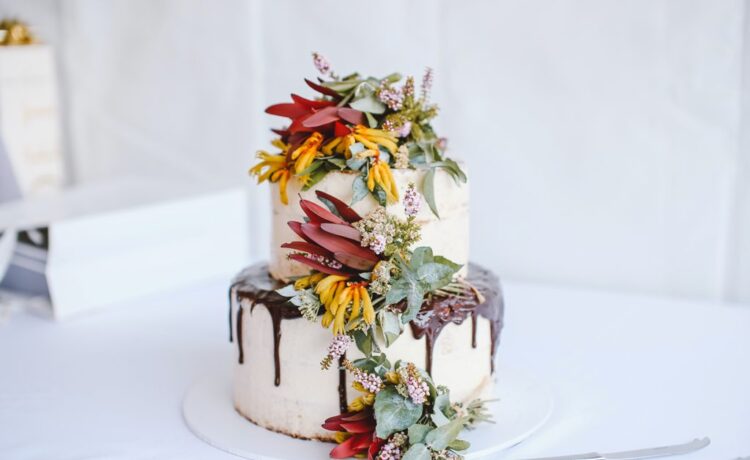Birds, butterflies, bees, and now the cake decorator are all examples. Flowers provide more purposes than only pollination. Furthermore, they are not just a style found in tidy gardens, a vase on the hall table, or a garish print on a garment that your lover adores but somehow got lost in the wash.
Given that it provides a straightforward and sophisticated cake decoration, it is really no wonder that this trend has emerged. Additionally, it accomplishes it for a fraction of the cost of fondant-sculpted flowers, which are a labor-intensive and delicate process for cake decorators. While using flowers as cake adornment may appear innocuous and look lovely, it is not always the case.

The many flower cake decorations and any potential risks will be described in this article. To guarantee that your cakes are safe for food, we will emphasize how important it is to know which flowers and foliage are appropriate to use as decorations. Flowers are a creative and entertaining way to bring life and color. Large celebration cakes commonly have this floral accent as a design technique, and it’s an easy and inexpensive approach to make them stand out and appear professional.
It’s possible that home bakers, particularly those who have just launched their own business, are unaware of any dangers. Flowers can be used to quickly and cheaply decorate cakes, but it’s crucial to recognize which flowers provide a risk and which don’t in order to safeguard consumers from harm.
There are a few terms you should become familiar with
If something is edible, it is safe to consume and will be digested by your body in the same way as other foods. These flowers are called edible flowers. Non-edible, items that are not suited for ingestion because the body cannot digest or break them down. Toxic refers to substances that are poisonous and would be exceedingly dangerous to consume. Non-toxic, This indicates that the object is not harmful, but use caution because it does not imply that it is unquestionably safe to consume.
The best choice for utilizing greenery to garnish cakes is to stick with edible plants. For instance, by utilizing botanicals. Thyme works well on cakes in the summer since it is delicate and lemony. Rosemary is more resilient and has a beautiful, rich green color that goes especially well with desserts in the winter. Although you could use delicate herbs like parsley and mint, they do have a tendency to wilt rapidly and may not work well on celebratory cakes like those for weddings since they would be left out before being eaten for a while.

As a general rule, if you are unsure whether any flowers or foliage are edible and secure for consumption, it is safer to avoid using them. It’s important to know that the flowers you’ve chosen were cultivated organically because, even if they are edible, they won’t be safe to consume if they have been sprayed with pesticides, which pose a major chemical concern. Flowers must be properly cleansed before they come into touch with food if you can’t guarantee that they are pesticide-free.





